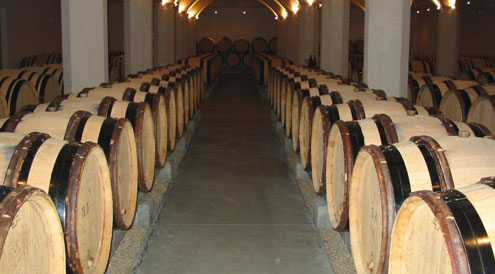2011 Bordeaux: Buyer Beware!
20 April 2012
저자: 지니 조 리

This year, more than 6,000 wine brokers and several hundred wine writers arrived in Bordeaux end of March to taste the infant 2011 wines. While some wines were still not saying much, others showed their potential to be blended and polished.
Even the best wines would have had a few minutes at most to reveal their character to the thousands of professionals sipping them.
Most wine writers cram in as much wine as they can handle during the week, many averaging in excess of 80 wines a day.
During the week it’s easy to stop the professionals – teeth are permanently stained grey, lips purple on the edges and the tongue a ghastly purple black. A Martian coming down to earth would look at the bunch of us and no doubt declare us insane.
The big news this week- although it comes as no surprise- is that Latour has announced it is leaving the place de Bordeaux (the traditional system whereby chateaux sell via courtiers and negociants in Bordeaux) starting with the 2012 vintage.
Negociants have been grumbling for years saying that Latour must have plans up its sleeve keeping back so much stock instead of releasing it en primeur. For the 2010 vintage, there was only a trickle available through the negociants with most being kept under the guardianship of the expanding cellar of Chateau Latour. Everyone knows they can afford to keep the stock with no pressure to raise money or sell early.
This is the traditional reason why en primeurs work so well for chateaux. If they sell most of their wines as futures, then they are able to get cash upfront, nearly two years before the wines are bottled. However, this system is changing as prestigious chateaux take the lead to control all aspects of the supply chain from supply of old and new vintages, the distribution system and even selling direct to select opinion leaders. The impact of Latour’s move will reverberate throughout the system with other chateaux following suit.
Latour has announced that they will sell en primeur in 2011, but starting 2012, it will only sell bottled wine. The entire system is on a knife’s edge right now and this year may be the tipping point. There is too much wine in the pipeline, especially of the 2010 wines which were too expensive and could not be sold. Most wine importers I spoke with recently said prices must come down by at least 50% from 2010 prices to make this year’s campaign successful.
Everyone is talking about an early campaign this year rather than the excruciatingly slow campaigns over the past few years. Last year, I wrote that what the Bordelaise missed for the 2010s despite the vintage being a success was timing. Many waited to release prices after Vinexpo in early June, but by then, the positive talking up of the vintage, rave reviews and high scores were just a faint memory in many people’s minds. Writers like me had been raving about the vintage since April and few publications would allow more column space to revisit the same story only a few months later. Why not release prices when the wine is hyped by the media rather than wait two months?
Last year, the timing was off, but that didn’t stop the Bordelaise releasing wines at prices as high, or often higher, and sometimes higher than 2009 (which were already astronomical with first growths close to US$1,000 per bottle). The argument was that the Chinese were crazy for top Bordeaux and the growing traders from even the remotest provinces were calling upon the negociants asking for allocations of the best wines. But the reality is that a handful of these jittery new buyers having, considered the price of the 2010s, decided cancel their orders, resulting in blockage in the supply chain.
Nearly all the chateaux directors I spoke with expressed the view that because of the modest quality of the vintage and market sentiments, prices will definitely drop. We will find out how much over the next several weeks. The petit chateaux that have released are about 20% lower than in 2010 but these wines were never that expensive to begin with. We may also hear other chateaux following Latour’s footsteps over the next few weeks and leaving the system, deciding not to sell their wines as futures.
With this vintage, which was mediocre to good for most properties, there is little to get excited about, unless we see prices drop significantly.
The demand from end consumers is soft right now, with many buyers looking at their recent purchases and noticing that their wines are not increasing that much in value with time. Some wines, when bottled, may be sold at the same price or, depending on market conditions and the economy, may be sold for less when they appear on retailers’ shelves.
There is a chance that this whole en primeur system may be seen as a game that benefits only the chateau owners who get their cash two years before their wines are even released and bottled. For wine lovers, 2011 is a vintage that needs careful selection and guidance from experienced professionals who have tasted these wines.
Reprinted with permission from South China Morning Post









